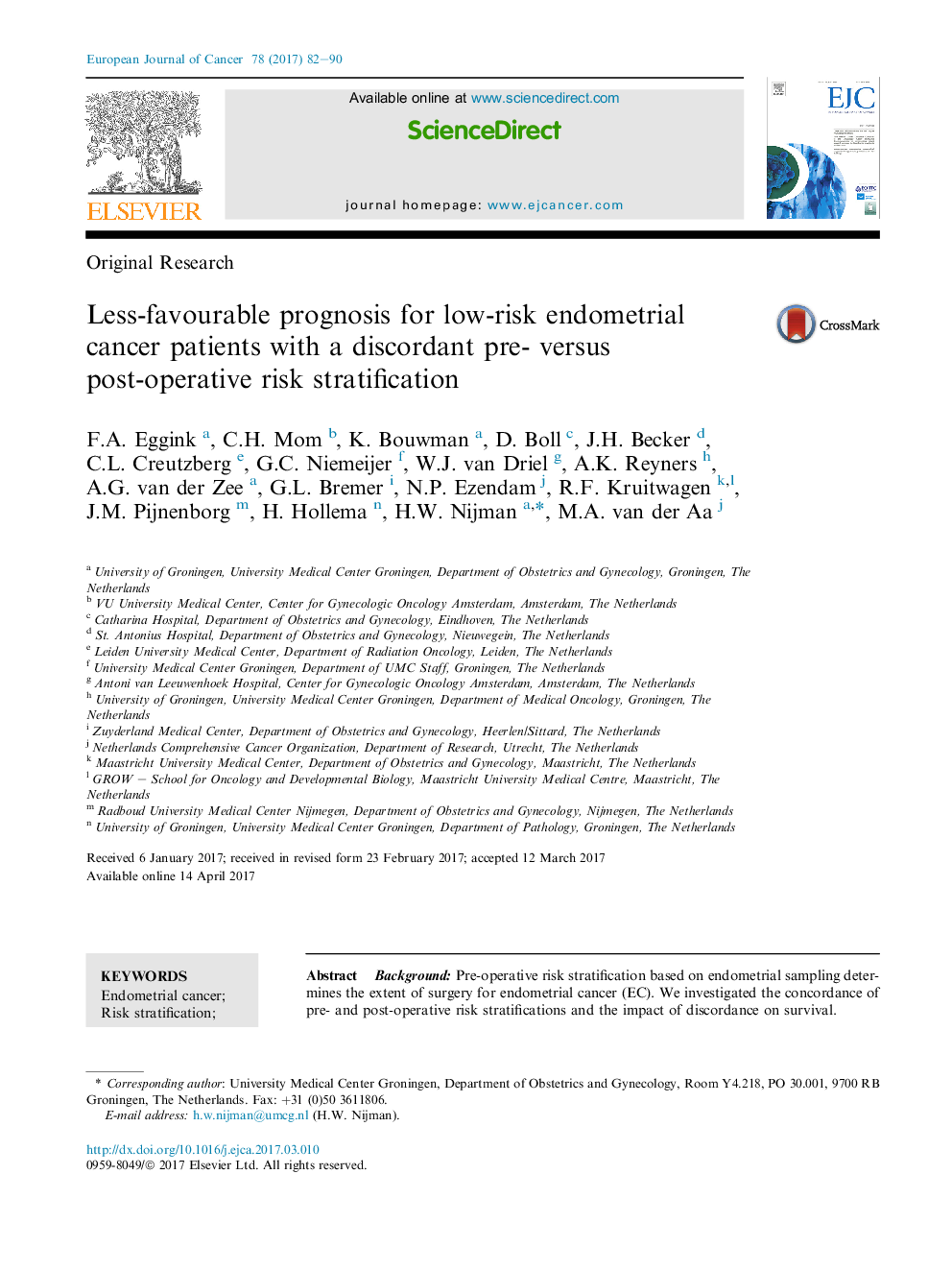| Article ID | Journal | Published Year | Pages | File Type |
|---|---|---|---|---|
| 5526290 | European Journal of Cancer | 2017 | 9 Pages |
â¢Pre-operative risk stratifications are used to guide surgical treatment decisions.â¢Concordance between pre- and post-operative risk stratifications was 90%.â¢A discordant risk stratification in low-risk patients negatively impacts survival.
BackgroundPre-operative risk stratification based on endometrial sampling determines the extent of surgery for endometrial cancer (EC). We investigated the concordance of pre- and post-operative risk stratifications and the impact of discordance on survival.MethodsPatients diagnosed with EC within the first 6 months of the years 2005-2014 were selected from the Netherlands Cancer Registry (N = 7875). Pre- and post-operative risk stratifications were determined based on grade and/or histological subtype for 3784 eligible patients.ResultsA discordant risk stratification was found in 10% of patients: 4% (N = 155) had high pre- and low post-operative risk and 6% (N = 215) had low pre- and high post-operative risk. Overall survival of patients with high pre- and low post-operative risk was less favourable compared to those with a concordant low risk (80% versus 89%, p = 0.002). This difference remained significant when correcting for age, stage, surgical staging and adjuvant therapy (hazard ratio 1.80, 95% confidence interval 1.28-2.53, p = 0.001). Survival of patients with low pre- and high post-operative risk did not differ from those with a concordant high risk (64% versus 62%, p = 0.295).ConclusionPatients with high pre- and low post-operative risk have a less favourable prognosis compared to patients with a concordant low risk. Pre-operative risk stratifications contain independent prognostic information and should be incorporated into clinical decision-making.
